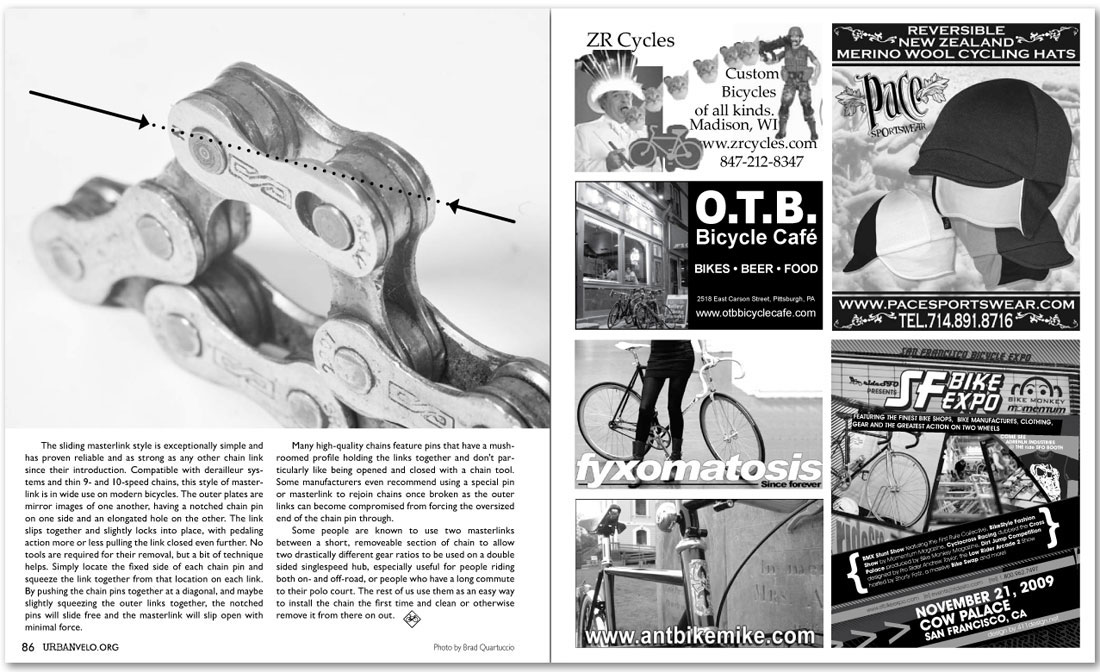

|
|||
| The sliding masterlink style is exceptionally simple and has proven reliable and as strong as any other chain link since their introduction. Compatible with derailleur systems and thin 9- and 10-speed chains, this style of masterlink is in wide use on modern bicycles. The outer plates are mirror images of one another, having a notched chain pin on one side and an elongated hole on the other. The link slips together and slightly locks into place, with pedaling action more or less pulling the link closed even further. No tools are required for their removal, but a bit of technique helps. Simply locate the fixed side of each chain pin and squeeze the link together from that location on each link. By pushing the chain pins together at a diagonal, and maybe slightly squeezing the outer links together, the notched pins will slide free and the masterlink will slip open with minimal force. Many high-quality chains feature pins that have a mushroomed profile holding the links together and don’t particularly like being opened and closed with a chain tool. Some manufacturers even recommend using a special pin or masterlink to rejoin chains once broken as the outer links can become compromised from forcing the oversized end of the chain pin through. Some people are known to use two masterlinks between a short, removeable section of chain to allow two drastically different gear ratios to be used on a double sided singlespeed hub, especially useful for people riding both on- and off-road, or people who have a long commute to their polo court. The rest of us use them as an easy way to install the chain the first time and clean or otherwise remove it from there on out.
|
|
|